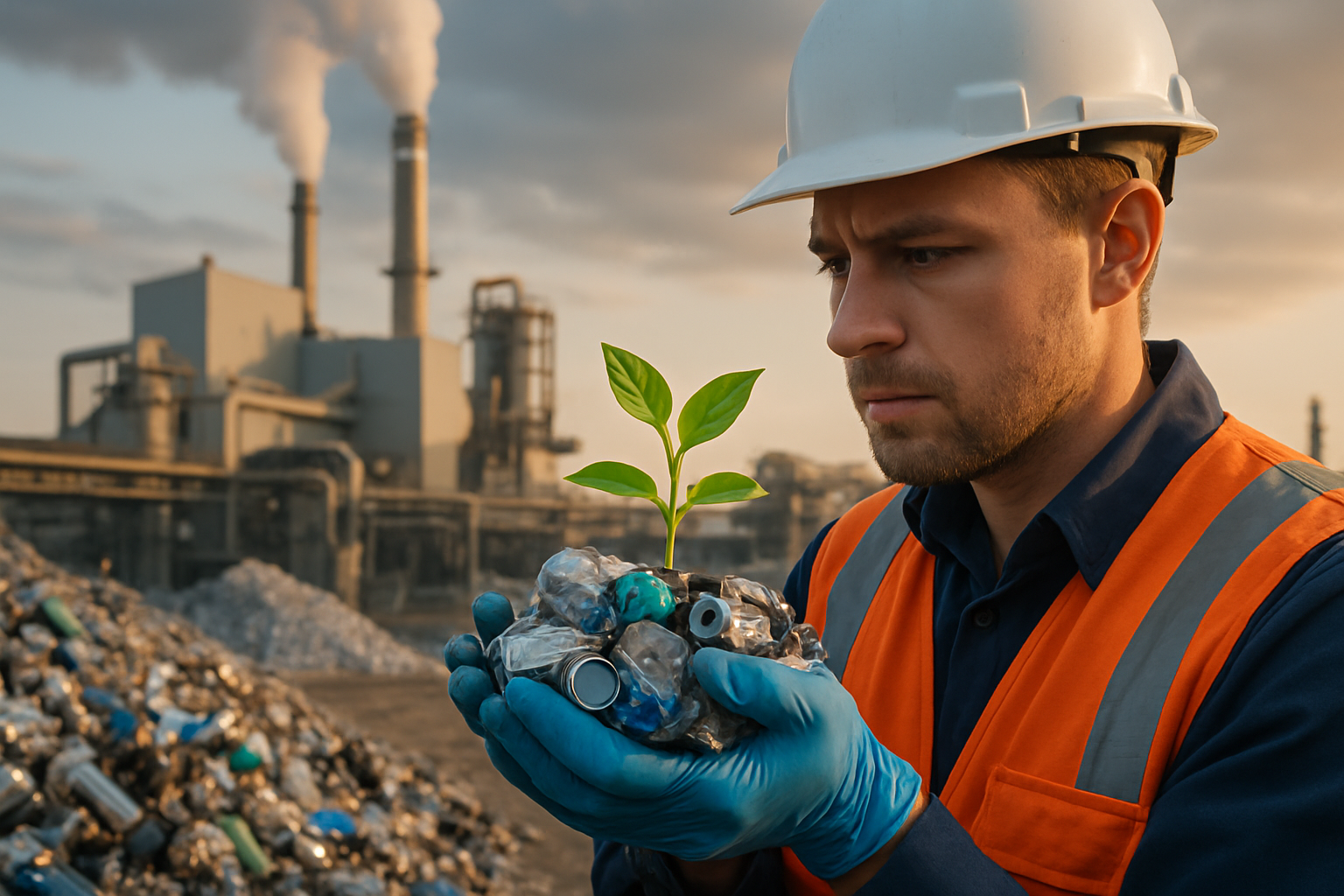Industrial Symbiosis: Revolutionizing Resource Efficiency
In today's competitive business landscape, innovative strategies for resource optimization are becoming increasingly crucial. Industrial symbiosis, a groundbreaking approach to sustainable manufacturing, is gaining traction as a powerful tool for enhancing operational efficiency and reducing environmental impact. This collaborative model transforms waste streams into valuable resources, fostering a circular economy within industrial ecosystems.

The Origins and Evolution of Industrial Symbiosis
The roots of industrial symbiosis can be traced back to the 1970s in Kalundborg, Denmark. Here, a group of co-located companies began spontaneously exchanging resources and by-products, creating what is now known as the Kalundborg Symbiosis. This pioneering initiative demonstrated the potential for businesses to create value from waste streams while simultaneously reducing their environmental footprint.
Over the decades, the concept has evolved from isolated examples to a globally recognized strategy for sustainable industrial development. Today, industrial symbiosis networks can be found across the world, from eco-industrial parks in China to resource recovery precincts in Australia.
Key Principles of Industrial Symbiosis
At its core, industrial symbiosis is built on three fundamental principles:
-
Resource Synergy: Identifying opportunities to use waste or by-products from one process as raw materials for another.
-
Collaboration: Fostering partnerships between diverse industries to create mutually beneficial exchanges.
-
Geographic Proximity: Leveraging the benefits of co-location to minimize transportation costs and maximize efficiency.
These principles work together to create a closed-loop system that mimics natural ecosystems, where waste is minimized, and resources are continually cycled through the system.
Benefits and Challenges of Implementation
The implementation of industrial symbiosis offers numerous benefits to participating businesses and the broader community. Companies can significantly reduce raw material and waste disposal costs, improve resource efficiency, and potentially create new revenue streams from previously discarded by-products. Furthermore, the reduction in waste and energy consumption leads to a smaller environmental footprint, aligning with growing consumer demand for sustainable practices.
However, the path to successful industrial symbiosis is not without challenges. Establishing trust and open communication between potential partners can be difficult, especially when dealing with sensitive information about production processes. Technical barriers may arise when attempting to match waste streams with potential uses, often requiring innovation and adaptation. Additionally, regulatory frameworks may not always be supportive of such collaborative models, necessitating engagement with policymakers to create enabling environments.
Case Studies in Successful Industrial Symbiosis
Examining successful implementations of industrial symbiosis provides valuable insights into its practical applications and potential benefits:
-
Guitang Group, China: This sugar refinery has created a network of symbiotic relationships, transforming by-products into inputs for paper production, alcohol distillation, and cement manufacturing.
-
Kwinana Industrial Area, Australia: This industrial zone has developed over 50 synergies between diverse industries, including mining, oil refining, and chemical production, leading to significant reductions in water use and carbon emissions.
-
Terneuzen, Netherlands: The Bio Park Terneuzen project has created symbiotic relationships between a fertilizer plant, a bioethanol facility, and greenhouse horticulture, optimizing energy and water use across the network.
These examples demonstrate the versatility and scalability of industrial symbiosis across different sectors and geographical contexts.
Future Prospects and Emerging Trends
As the world grapples with resource scarcity and environmental challenges, industrial symbiosis is poised to play an increasingly important role in shaping sustainable industrial practices. Emerging trends in this field include:
-
Digital Platforms: The development of online marketplaces and databases to facilitate the matching of waste streams with potential users.
-
Policy Integration: Growing recognition of industrial symbiosis in circular economy policies and sustainability strategies at national and regional levels.
-
Cross-Sector Collaboration: Expanding symbiotic relationships beyond traditional industrial boundaries to include urban systems and service sectors.
-
Innovation in Resource Recovery: Advancements in technologies for extracting value from complex waste streams, opening up new possibilities for symbiotic exchanges.
Actionable Strategies for Implementing Industrial Symbiosis
• Conduct a comprehensive audit of your waste streams and resource inputs
• Engage with neighboring businesses to identify potential synergies
• Invest in flexible production processes that can accommodate diverse inputs
• Develop clear communication channels and data-sharing protocols with partners
• Explore innovative technologies for resource recovery and waste transformation
• Collaborate with local authorities to create supportive regulatory frameworks
• Engage employees at all levels in the symbiosis initiative to foster a culture of resource efficiency
In conclusion, industrial symbiosis represents a powerful approach to enhancing resource efficiency and sustainability in the industrial sector. By fostering collaboration, innovation, and a circular mindset, businesses can unlock new value streams while contributing to a more sustainable future. As the concept continues to evolve and gain traction globally, it offers a promising pathway for industries to thrive in an increasingly resource-constrained world.





